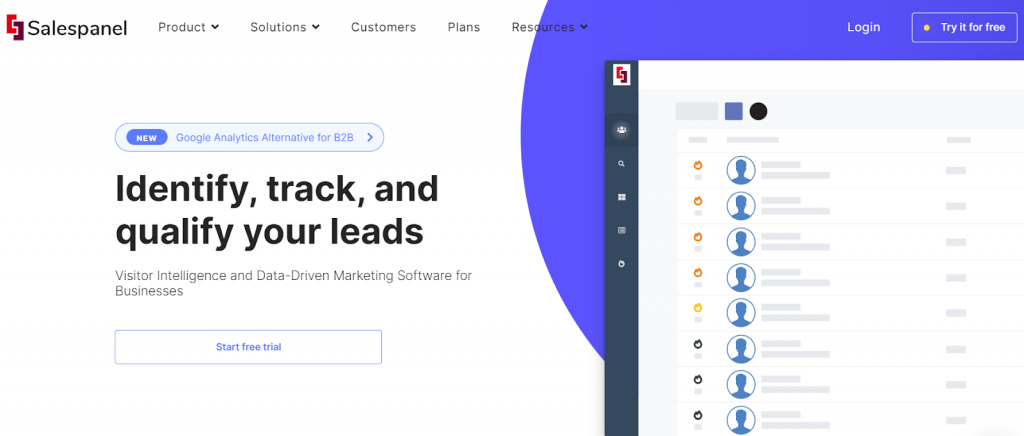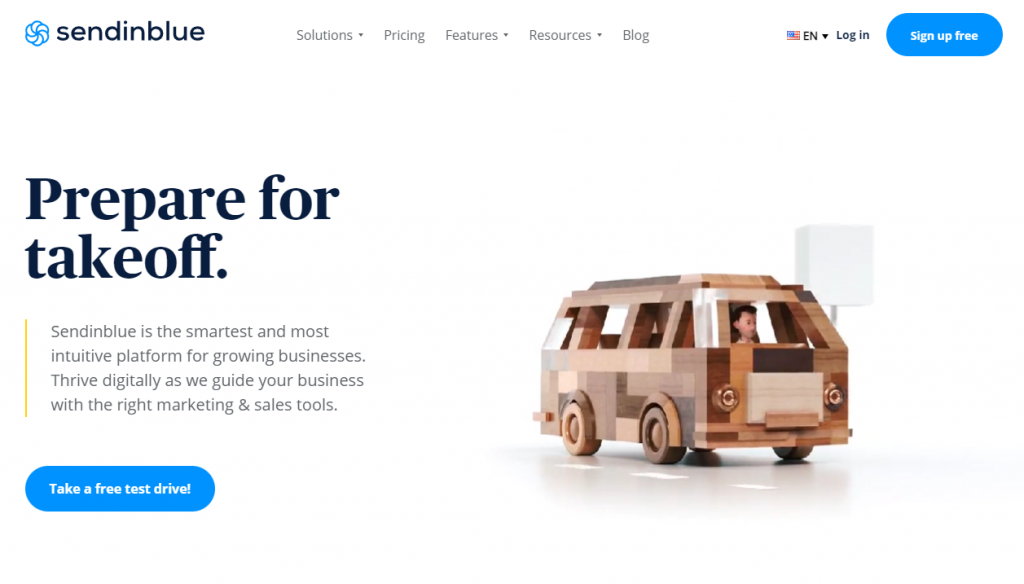What Is Growth Marketing? 10 Strategies You Should Try
Growth marketing relies on a data-driven approach to grow a business’s revenue and expand its market share. It focuses on optimizing the entire customer journey, helping you plan effective long-term growth strategies.
Applying growth marketing strategies also enables you to understand the target audience to deliver a better customer experience. As such, companies can improve their branding and position in the industry.
This article will cover everything you need to know about growth marketing, from what it is to how it can benefit businesses. We’ll also cover 10 proven strategies you can use to grow your business.
Growth Marketing Definition
Growth marketing is a data-based strategy used by B2B businesses to optimize marketing efforts and improve sales.
The process involves data evaluation through marketing campaigns – from the first impression to the moment a customer completes a transaction and beyond that. The collected data is then used to improve growth strategies in all stages of the sales funnel. This is what differentiates a growth marketing strategy from other forms.
While the traditional marketing model focuses more on driving customers at the awareness stage, growth marketing focuses not only on customer acquisition, but also on customer retention and upselling. That way, businesses can gain valuable information on the audience’s pain points to develop more effective campaigns.
Typically, growth marketing uses the AARRR framework, which stands for Acquisition, Activation, Retention, Referral, and Revenue.
To optimize future marketing campaigns, here are a few crucial aspects businesses need to prioritize:
- Data analytics – measure customer data using the right tools to enhance your marketing strategy.
- Customer support – collect feedback and suggestions from customers to identify which areas need improvement.
- Business development and sales – find the intersection between your product and the target market to optimize sales strategies.
- Product development – focus on addressing customer pain points and highlighting key product features in your marketing campaigns.
10 Growth Marketing Strategies to Try
Now, let’s look at 10 effective growth marketing strategies to help your business scale in the long term.
1. Content Marketing
Content marketing is an excellent growth marketing strategy to educate customers about your brand and products. You can do this by distributing media, including articles, blog posts, newsletters, videos, and eBooks, across different platforms.
In terms of the sales funnel, content marketing plays an important role in the acquisition stage. Customers tend to look for products to solve their problems. Therefore, provide tips or tutorials that answer user questions based on common search queries.
Publishing quality content also helps a business shape customers’ perceptions of the company and its products. In addition, it is a great way to show your expertise as a thought leader in the industry.
Aside from posting on social platforms, we recommend running your content marketing campaigns on a company site. It’s an excellent way to build credibility and drive visitors to your landing page or product pages. If this is your first time, check out this complete guide on how to make a website.
2. Lead Magnets
Acquiring customers is essential for businesses, making the lead generation process crucial. Having more qualified leads increases your chances of turning them into customers and gaining higher profits. Therefore, pay attention to your lead generation marketing channels.
Try placing lead magnets on your blog content to attract prospects. They can be sign-up forms, guides, learning resources, or even webinars. Combining content and lead magnets is a great way to align sales and marketing and practice revenue marketing to boost new users.
3. Search Engine Optimization (SEO)
Organic search generates significant web traffic, with 63% coming from mobile devices. Therefore, search engine optimization (SEO) is crucial for online businesses and is an affordable strategy for growth marketing.
SEO helps improve your site’s ranking and visibility on search engines, enabling more potential customers to find your website. Some factors affecting site rankings include page load speed, content quality, web responsiveness, user experience, backlinks, and security.
Although it may take some effort, tools like Ahrefs or WordPress SEO plugins can help provide insights and ideas for site optimization. These help you evaluate your keyword and content strategy and conduct competitor analysis for better site performance.
4. Disruptive Marketing
This method focuses on experimental marketing strategies, challenging the rules of the industry. A great example of this is the digital disruption of Netflix – a DVD rental company that turned into an online streaming platform business. It uses new technologies and innovations to create new markets and revenue streams.
Disruptive companies enhance the customer experience by exceeding demand, often adopting high-technology and personalized services. What’s more, this out-of-the-box growth strategy can help distinguish your brand from those using conventional marketing methods.
5. Free Tools and Services
To further enhance your marketing strategies, consider offering prospective buyers a preview of what the company offers through free tools or services.
Providing free resources can increase customers’ interest in buying your product. Salespanel’s free trial feature and Grammarly’s free writing assistant are great examples of this strategy.

With growth marketing in mind, consider using a “freemium” strategy to scale your business. You can offer free services with basic features as an introduction to attract new customers. Then, give options for premium solutions, encouraging clients to benefit from more advanced features.
One of the most effective ways to build a community and attract new customers is through social media platforms. Define your niche and target audience, then choose the right channels to share relevant content and boost brand awareness.
For example, LinkedIn is a great platform for B2B companies to share content and drive more traffic to their websites. Meanwhile, Twitter and Instagram are excellent resources to discover what’s trending in the market.
Incorporate marketing trends when advertising your products through social media ads for higher customer engagement. Also, build valuable relationships by interacting with potential customers, as it may lead to conversions.
7. Email Marketing
Create personalized emails for different types of customers to attract new visitors and retain existing ones. Along with your emails, you can include a feedback survey form or poll. This is a great way to understand users’ content preferences, product interests, and how you can improve the customer experience.
Email marketing tools like Mailchimp and Sendinblue let you design email campaigns easily with pre-built templates and an easy page builder.

These tools also often provide a customer relationship management (CRM) feature. It helps you learn your audience’s behavior and gain insights to personalize your email marketing campaigns. What’s more, it eases the creation of a mailing list for bulk email distribution.
8. A/B Testing
A/B testing is excellent for comparing digital marketing materials to find the most effective one for your campaign. For example, design two identical email templates but with different subject lines. Then, send both versions of the email to different audience segments to determine which version generates the most sales.
Doing tests before launching a marketing campaign is beneficial as you can use the data for better growth marketing. Eliminate what’s not working and focus on elements that can bring more revenue in the long term. Ideally, A/B testing should last two weeks to generate enough data for growth marketers.
Google Optimize is a free tool integrated with Google Analytics for A/B testing. You can also run multivariate and redirect tests and create custom landing pages to increase conversions.

9. Referral Programs
Create a referral program to boost your customer base and improve word-of-mouth marketing. Reward your customers with cashbacks, discounts, or freebies for successful referrals.
For example, Hostinger gives a 20% commission to referrers for the first web hosting plan purchased by referrals, and the referral will get a discount upon checkout. It’s an excellent example of acquiring new users while reducing customer acquisition costs.
What’s more, converted leads from referral marketing have an average of 16% higher lifetime value. This type of customer can bring more revenue to your business in the long term compared to non-referred consumers.
10. Establish a Loyal Customer Base
Once you’ve established a customer base, it is important to maintain customer satisfaction. Keep existing customers happy by rewarding them with special offers, free products, or membership perks. It’s also a great opportunity to promote new or limited-edition products.
A great example of a customer loyalty program is The Body Shop’s Love Your Body, which focuses on building a strong community.

Not only does the program reward customers for purchases they make, but they can also get birthday gifts and exclusive invitations to membership events. This incentivizes customers to make repeat orders. Also, it helps improve your brand image and customer lifetime value for sustainable company growth.
Conclusion
Growth marketing is a data-driven strategy that optimizes the customer journey to generate more revenue. Unlike traditional marketing, growth marketing aims at all stages, including acquisition, retention, and upselling.
It is extremely beneficial for your business, since growth marketing helps you maximize strategies efficiently based on real-time customer data.
Here are 10 growth marketing strategies you can try:
- Distribute content to educate the target audience about your business.
- Add lead magnets to generate qualified prospects.
- Improve your website’s SEO for better visibility and higher traffic.
- Try experimental marketing strategies to stand out from the competition.
- Offer free tools to increase customers’ interest in your product.
- Build an audience with social media marketing.
- Use email marketing to boost lead generation and sales.
- Do A/B testing to launch the most effective campaign.
- Create referral programs to gain more customers.
- Maintain customer loyalty through membership benefits.
We hope this article helps you understand growth marketing and the different strategies you can apply to develop your business.
Best of luck on your journey as a growth marketer. If you have any questions about growth marketing, leave your comments below.
Sell more, understand your customers’ journey for free!
Sales and Marketing teams spend millions of dollars to bring visitors to your website. But do you track your customer’s journey? Do you know who buys and why?
Around 8% of your website traffic will sign up on your lead forms. What happens to the other 92% of your traffic? Can you identify your visiting accounts? Can you engage and retarget your qualified visitors even if they are not identified?

